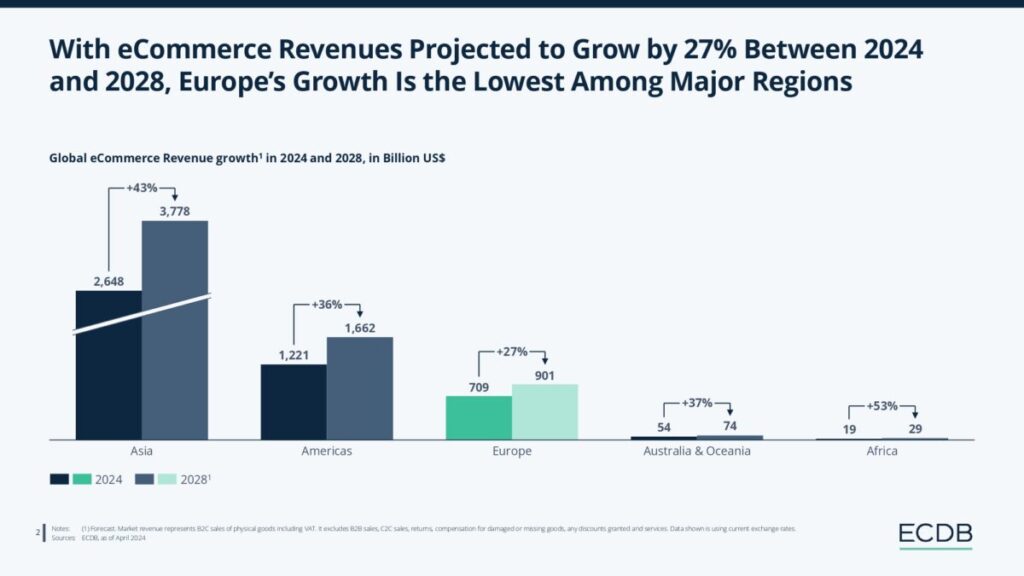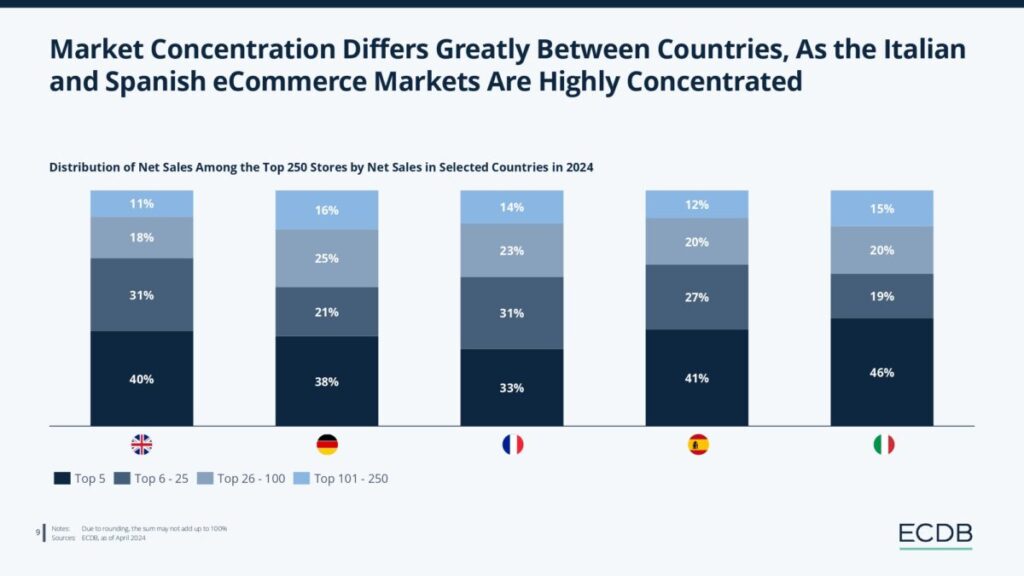Compared to the major markets of Asia and the Americas, where the e-commerce sector is clearly more prominent, and which make up two-thirds of the global e-commerce market, with a projected revenue growth of 43% (from 2,648 billion to 3,778 billion dollars) and 36% ( from 1,221 billion to 1,662 billion dollars) by 2028 respectively, Europe’s growth rate does not seem as unforeseen, especially since it is the third biggest market for e-commerce globally. However, the forecast projects a clear gap between Europe and the rest of the world, with both Africa as well as Australia & Oceania expected to reach a revenue growth of 53% and 37% in the next four years, while the two are signifcantly smaller markets compared to Europe.

In Europe, e-commerce growth is fueled by high penetration in leading economies such as the UK, Germany, and the Netherlands, where rates already surpass 80%. Additionally, smaller but rapidly expanding markets in Southern and Eastern Europe, such as Greece, Portugal, and Poland, present substantial opportunities for future growth. During the pandemic, the sector received a major boost but it does not manage to hold on to the same consumer base following the aftermath, as inflation, and market saturation have been impacting consumer behavior in the region.
Market Concentration Differs Greatly Between European Countries
The distribution of net sales in the biggest european e-commerce economies shows a significant difference between the higher and lower ranking Top 250 stores. The markets in the UK, Spain, and Italy have at least 40% of all net sales concentrated between the top 5 retailers. In comparison, Germany and France have a broader distribution reaching a larger number of retailers in the Top 100, which hold around 50% of the overall net sales in their repective markets. Among retailers, the market leader in Europe’s e-commerce sector is Amazon, having held onto its position for the past years. Just in Germany, Amazon.de earned 15.8 billion dollars in revenue in 2023.

Fashion Was Europe’s Best-Selling E-Commerce Category In 2024
Generating 149 billion dollars in revenues, the fashion industry was leading slightly ahead of its Electornics and Leisure counterparts in revenue development, with the other two both reaching 145 billion dollars in revenues. The most-selling fashion products came from Apparel, making up 59% of revenues, Footwear with 23% of revenues, and Bags & Accessories with 18%.
A big gap divides the three primary and the other, in comparison, less prominent sectors. Grocery retail, Furniture & Homeware, Care Products and DIY each recorded between 72 billion dollars and 58 billion dollars throughout the year.

As Europe’s e-commerce sector continues to grow, albeit at a slower pace than other regions, increased competition from low-cost online marketplaces, such as Temu, is shaping the landscape. While recovering consumer confidence has contributed to last year’s growth, the surge of budget-conscious shopping has fueled platforms like Temu to capture a larger share of the market. With competitive pricing strategies, these platforms are especially popular among cost-conscious consumers, offering items at significantly lower prices than traditional European retailers, which has in turn raised concerns among local e-commerce players.
Find more information in ECDB’s e-commerce report here.






